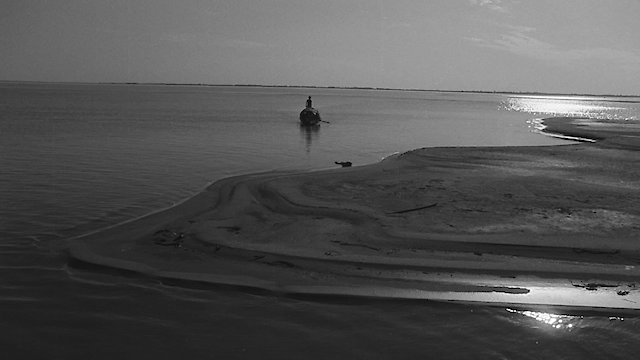
A River Called Titas
Where to Watch A River Called Titas

A River Called Titas is a cinematic masterpiece from one of the pioneers of the parallel cinema movement in India, director Ritwik Ghatak. Released in 1973, this potent blend of neorealism and melodrama is a haunting tale of love, loss, and survival that unfolds along the banks of the mythical Titas River in pre-partition Bengal. The film stars Rosy Samad, Kabori Sarwar, and Rawshan Jamil, who seamlessly embody the struggles and hopes of the local fishermen community.
The film's narrative is weaved around the Titas River, arguably the most riveting element within the movie. The river is a vital part of the local fishermen's lives, becoming the central character in this piece. It's not merely a geographical element but a pulsating presence that dictates the rhythm of life, epitomizing the crushing indifference of nature against human endeavours. In essence, the river is a metaphorical device highlighting the human condition amidst the fluctuating natural world.
Kabori Sarwar portrays the character of Basanti, a vibrant young woman whose life is overshadowed by tragedy and heartbreak. Her portrayal is compelling and heart-wrenching, balancing the vivacious energy of youthfulness and the agonizing trials of life. Rosy Samad delivers a powerful performance as Rajar Jhi, a woman marked by similar tragic circumstances. Rawshan Jamil exudes both strength and vulnerability as Kishore, making the audience witness the unflinching resilience of humanity against adversities.
A River Called Titas begins as an intimate human drama and broadens its ambit to represent the collective experience of a community that lives and breathes with Titas. As the narrative unfolds, the film employs a series of flashbacks and time leaps, thus giving an expansive sweep to the storytelling. Its narrative complexity is manifested in the way it shuffles between individual fates and overarching societal dynamics. In Ghatak's hands, these techniques powerfully mirror the memory of a now-vanished world alongside the pressing realities of societal displacement.
Apart from focusing on the central characters, the film also portrays an elaborate tapestry of the broader community against the backdrop of shifting sociopolitical circumstances. Fleeting but telling snippets of folk songs, local customs, religious festivals, and communal rituals are effortlessly integrated, painting a rich picture of Bengali rural culture and tradition.
The cinematography of the film plays a significant role in establishing the intense relationship between the characters and the surroundings. Beautifully shot, each frame carries an evocative quality that mirrors the mood of the moment, be it the tranquil placidity of the wide river or the tumultuous undercurrents of life that exists alongside it. The accompanying sound design adds another layer of raw authenticity, with the ceaseless sound of the river flowing, parrots squawking, or the haunting melody of a Bhatiyali folk song.
A River Called Titas is more than just a movie; it's a poignant document carrying an authentic portrayal of a time, place, and people in a constant swirl of change. Ghatak's distinctive style of storytelling and his adept command over cinematic language help make this film a hauntingly poignant experience that stands the test of time.
It is worth noting that this movie belongs to a series of works by Ghatak, dealing with the tragic consequences of the 1947 Partition of India on the Bengali people. Despite the specific time and place of its setting, the underlying themes of the film are universal, touching upon the ephemerality of life, the inevitability of change, and the persistence of hope in the face of unrelenting hardship.
In terms of pacing, A River Called Titas may seem slow and contemplative to mainstream audiences. Yet, this very quality allows the viewer to immerse themselves in the rhythm of life along the Titas, offering them a deeply empathetic look into the lives of the characters and their struggles, making the film a sensory experience rather than a passive viewing exercise.
In conclusion, A River Called Titas is a profound meditation on life and death, love and loss, temporality and permanence. It's a testament to Ghatak's brilliance and a universal tale of human resilience against the whims of nature and time. The performances of the lead actors, the stirring narrative, along with the emotive cinematography, create a cinematic tapestry that stays with the viewer long after the film has ended. A must-watch for cinephiles, this film is an essential entry in the annals of world cinema.
A River Called Titas is a Drama, Kids & Family movie released in 1973. It has a runtime of 159 min. Critics and viewers have rated it moderate reviews, with an IMDb score of 7.2..
